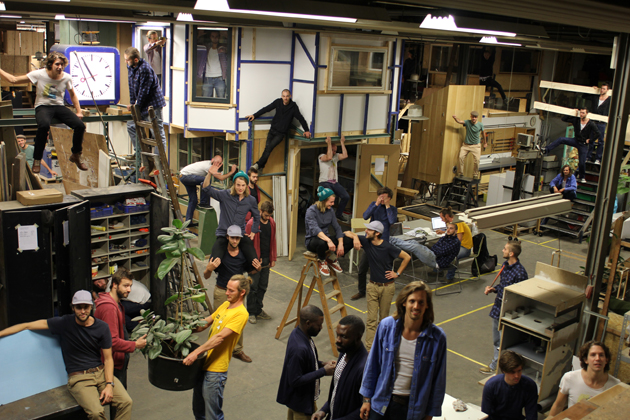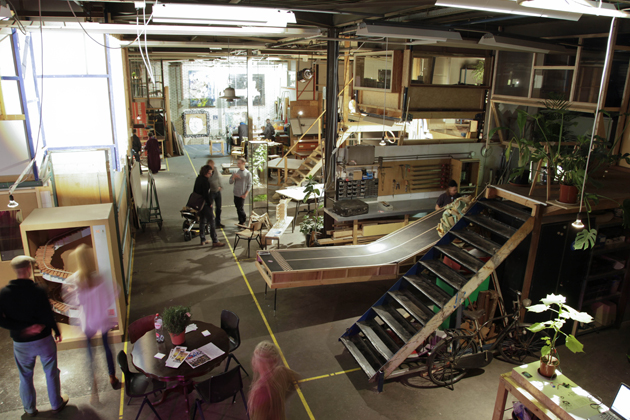Claiming that the 5-year-old Great Recession we find ourselves in nowadays can have positive effects as well might be strange, but something that the members of Collaboration-O proudly admit. Whereas the creative sector faced a downturn in the market and drastic budget cuts of cultural supportive funds, Collaboration-O built up their collective workspace without a big bag of money from investors or a loan from the bank. They are neither a government-funded project, which means they are not being reliant on anyone but themselves and this makes them a sturdily collective-built and based on the principals of collaboration. This is also exactly what their welcome sign in front of their workspace in Eindhoven tells you: “Big Boys Work Together”.
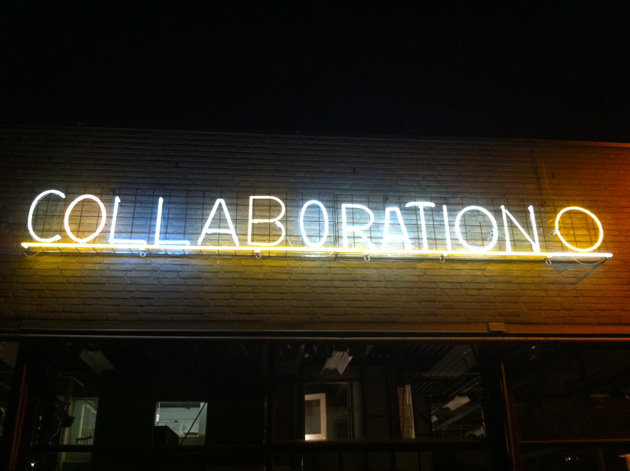
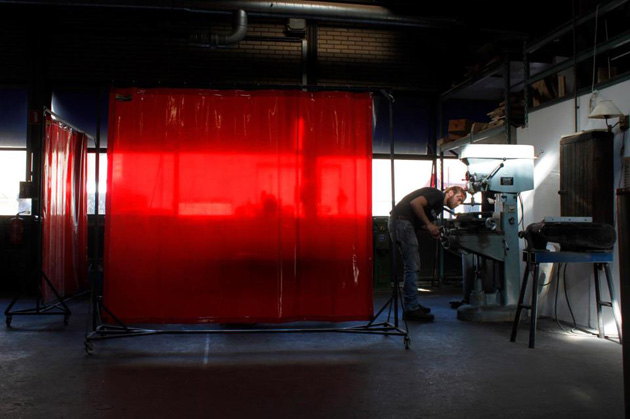
“Big Boys” refers to the 14 starting designers – thirteen guys and one girl – of the Collaboration with the unifying letter O. In an abandoned industrial hall each member works as an individual designer in his or her own-constructed 2-level balancing lofts. But next to their focus on a personal career, they all benefit from their shared investments in the collective: they share a central kitchen, courtyard and co-own heavy-duty machinery, and most notable of all; they often team-up to enrich each other’s projects and divide orders that are coming in for the collective among themselves.
As independent collaboration, they all have their tasks to keep the organically grown collective running. “It’s my responsibility to take care of the machines here, together with Martin Schuurmans and Joost Gehem”, tells Daan Brandenburg, a designer with a passion for wood and mechanics, “and Jelle Mastenbroek is this year the collective’s chairman during our meetings”. Other members have the role of concierge or event manager, or run the financial or communication “department”.
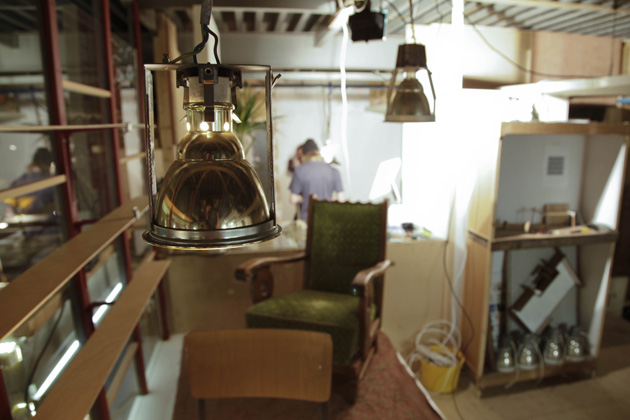
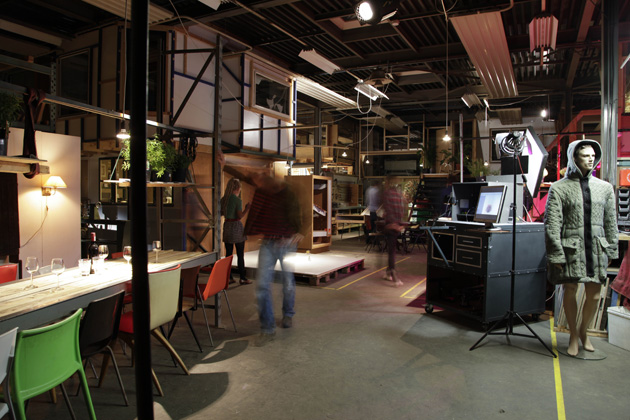
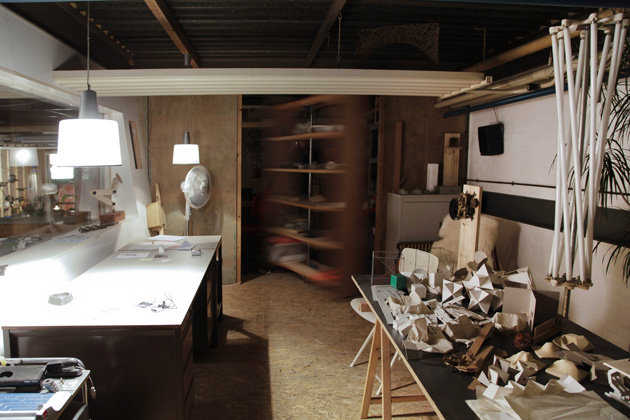
The collective is sticking together for almost 5 years now, which is special since their individual paths are developing in quite different directions. Whereas some specialize in wood carpentry and interior furniture like Brandenburg and Kaspar Eisenmeier, other members like Paul Heijnen, Niels Hoebers or Sander Wassink create far more conceptual works that are (almost) pieces of art, and that were recently showcased in Rossana Orlandi’s Museo Bagatti Valsecchi in Milan and during Design Miami/Basel, respectively. But as long as Collaboration-O keeps its function as a beneficial “springboard to make a career in the creative field”, the members will stick together. Because, explains Brandenburg, “although the individual is central to us, as a group we are much stronger”.
